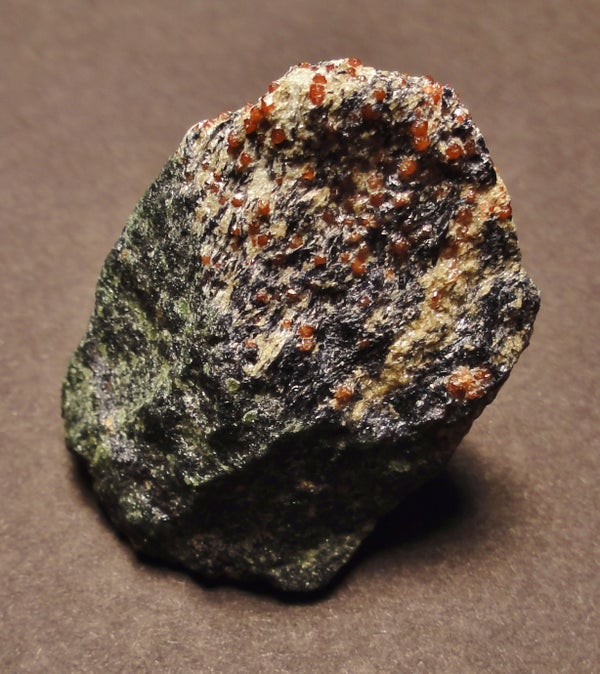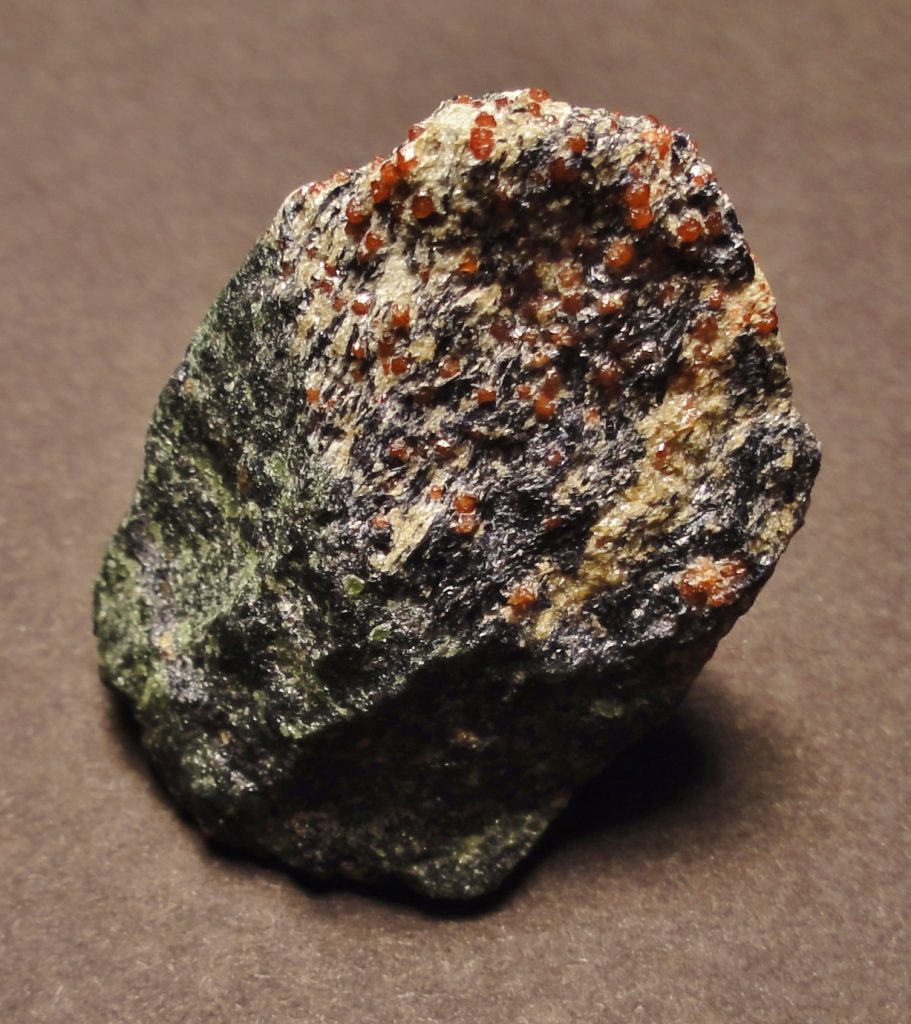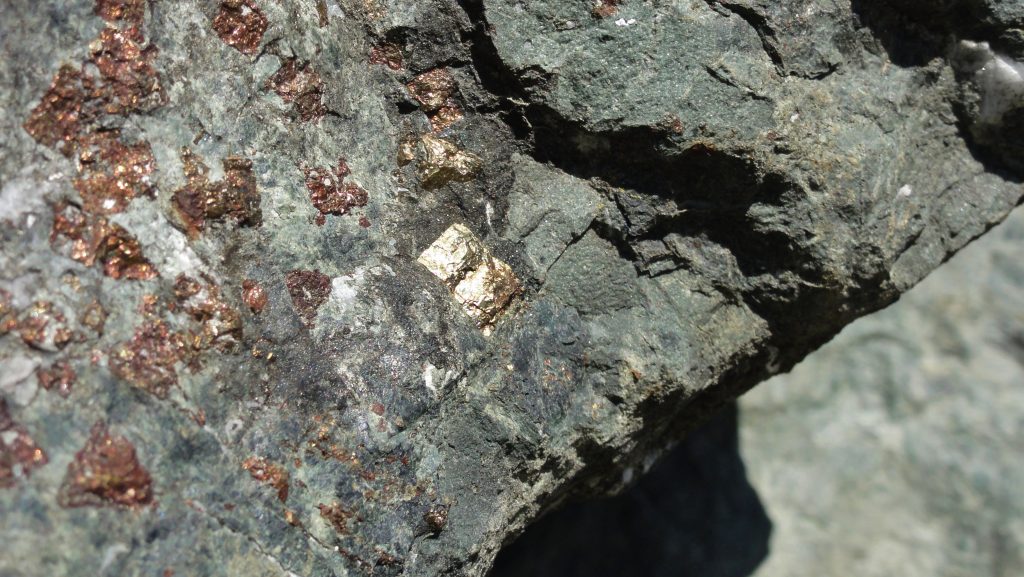This article was published in Scientific American’s former blog network and reflects the views of the author, not necessarily those of Scientific American
Surgoshan asks: "What is the prettiest rock?"
It's a terribly difficult question only because there are so many prettiest rocks! So I'll be back occasionally with moar prettiest rocks. For our inaugural edition, the prettiest rock is blueschist.
Lockwood introduced me to this magnificent stone. It's pretty much everything I love. Look at it!
On supporting science journalism
If you're enjoying this article, consider supporting our award-winning journalism by subscribing. By purchasing a subscription you are helping to ensure the future of impactful stories about the discoveries and ideas shaping our world today.
It's blue, and a bit green: two of my favorite colors. It's got garnets! Love the garnets, plus they're my birthstone. Many pieces have got pyrite, which has always been a particular favorite of mine. It's super-sparkly in many places. And it's metamorphic. To top it all off, it's the true blueschist!
Wait, what? Isn't it all blueschist?
Well, not necessarily.
See, there's true-blue blueschist, but it comes in a family of metamorphic things that have been subjected to similar temperatures and pressures. That family is the blueschist facies rocks, and they include slate and schist. It sounds confusing, but it's actually fairly simple to explain. See, blueschist facies rocks are generally formed in subduction zones where oceanic crust is being stuffed into a trench. That crust includes the basalts and other mafic and ultramafic rocks that will become true blueschist once they're pressure-cooked. But the subducting slab also contains pelagic sediments that become things like mudstone and siltstone when they lithify. Those get backed at the same temperature and pressure, and therefore share some of the same minerals that form in those conditions, but they turn into slate or schist. Think of it like putting either cake batter or bread dough into the oven: you end up with delicious things with a few common characteristics, but they're quite different!
Let's look at what it takes to make blueschist:
Mafic or ultramafic rock (basalt, gabbro, etc.)
Heat from 200°C to 500°C
Pressure from 6-14 kilobars
These are actually pretty unusual conditions: ordinarily, a high pressure environment would also be high temperature, but these temps are somewhat low compared to the pressure. This only happens when a cold oceanic slab subducts. Pressures go up (geologically) rapidly, but it takes time for the slab to heat. That's how these strange, beautiful low-temperature, high-pressure minerals form. If the slab continues subducting, it will continue heating up, the minerals will change accordingly, and we won't have blueschist anymore. Happily, subduction zones tend to be somewhat chaotic places where bits of the subducting slab break off and get shoved back to the surface, so we get this rare but extraordinarily beautiful rock.
In a true blueschist, you're typically going to get these minerals:
My lovely samples from Bandon, Oregon have almost all of these, telling me they formed under pressures of at least 10kbar. That means these beauties were once buried under at least 35-40 kilometers of crust! How's that for going underground?
Blueschist is rare, since the conditions that produce it are rather odd. It's also rarely very old, as it's easily changed by further metamorphic events. So, if you get a chance to see this most beautiful rock in person, appreciate it for the treasure it is.


